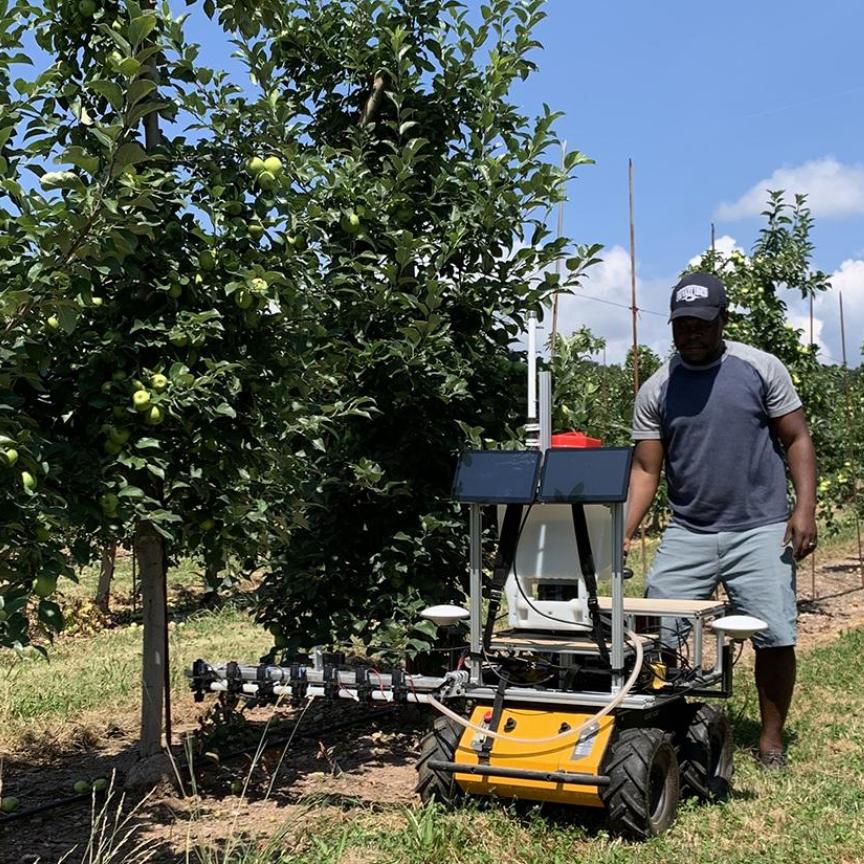As the worldwide machine vision market continues to expand – with new trends emerging and new elements coming into play that could impact existing business models – companies are searching for those ever-important opportunities to stimulate growth.
One such trend is almost certainly embedded vision, although the technology behind it is not new, as Mark Williamson, managing director at Stemmer Imaging, noted: ‘Embedded vision is a big topic. However, it has been here a long time, because every smart camera that you buy is an embedded vision system.’
The big difference, said Williamson, is that historically an embedded vision system was a custom solution, with high development costs to build the hardware from components and create it. ‘That was great for people like Teledyne Dalsa and Cognex, but for someone that wanted to spend a few hundred products, the cost was prohibitive.’
Generally, embedded vision is using the same kinds of processor that are used in mobile phones, which are powerful pieces of equipment. Camera companies like Allied Vision and Basler are producing modules that will connect directly to embedded boards. ‘Now you’re in a situation where you have got the ability to create an embedded vision system without having to go and design everything from scratch,’ Williamson said.
Williamson also attributes software development as a factor. ‘Five years ago, there were almost no commercial machine vision libraries available for embedded platforms, so companies would have to develop everything themselves,’ he said. But now software libraries are often supported on Arm and other embedded platforms, so a camera can be plugged into an embedded board and the development software installed to build a vision system.
‘There are companies that will take a standard design and if you want to buy, say 1,000 or 2,000 pieces, they will modify those designs to meet the OEM’s needs. That’s a lot cheaper than starting from scratch.’
Williamson believes that the traditional machine vision market will also remain. ‘The PC is still a more powerful machine, and there’s a lot of flexibility in a PC-based vision system. But, for the higher volumes, where price and size is critical, you’ll see more of those applications go to embedded.’ He added that the real growth from embedded vision will be new applications where PCs weren’t previously viable.
Joost van Kuijk, VP of marketing and technology at Adimec, also cited embedded vision as a key factor in the industry’s future. ‘There are a number of technological challenges in machine vision that the industry is faced with. Other industries, like surveillance or consumer, are using vision more in an embedded way, so I would call that the technology threat for the industry.’
Van Kuijk added that engineers generally don’t want to see the images anymore, but they do want to know about the decisions that are made by the vision system.
Williamson also touched on artificial intelligence, predicting that the industry will need to give it greater consideration. ‘We have seen over the last five years a massive cost reduction in camera pricing,’ he said. The camera, however, is only a small part of the vision system, and the biggest cost, according to Williamson, is time. ‘The time, research and knowledge, that’s what makes a system successful or not,’ he stated.
‘I think artificial intelligence, in the long term, will capture that information,’ Williamson continued. ‘So, almost at the design stage, the vision systems will know what it can be.’ He said that, ideally, a camera with multiple lighting configurations could be installed and the vision system works out the best combination of imaging parameters for itself.
Deep learning, on the other hand, Williamson noted, is great for recognising defects – but not for doing measurements, which is part of what traditional machine vision systems do.
The other area of growing importance to how machine vision operates and therefore how it is sold, said Williamson, is the advances being made in algorithms. ‘Going back to the 1990s, a smart camera had such a small processor that it could only do very basic processing, which meant the algorithms were poor and it wasn’t reliable. Nowadays a smart camera is using the most advanced algorithms possible, so it can perform as well as a PC-based vision system. That’s why a lot of applications – such as hyperspectral systems, for example – are going from PC to smart camera.’ The ability to put highly competent algorithms on smart cameras is also opening up new applications that Williamson said were impossible 10 years ago.
Hyperspectral imaging is a good example of an upcoming application for Williamson, because it historically required a specialised skill set. This, in turn, meant a high entry-level cost, simply to cover the research to set it up. ‘Now, with deep learning and artificial intelligence, it’s a case of almost pointing [the camera] at the product and the system learning the spectral signature. Suddenly, you don’t need spectroscopists to do it anymore. Now a machine vision person can do it.’
But that’s not to say that the high-end offering will disappear – far from it. Williamson believes instead that other things will replace it. ‘That high-end is still there,’ he stated, ‘except the simpler applications now are becoming mainstream commodities and becoming cheaper.’ That market will grow, according to Williamson, but the vision aspect will be less expensive and easier to use.

‘There will still be a high-end vision system, but it will do different things,’ Williamson continued. Hyperspectral is a good example, but even here there are developments in the most expensive part of the system, the shortwave infrared camera, which can cost up to £13,000, noted Williamson. ‘I expect, with new technologies in the next few years, that will halve,’ he said. ‘Eventually, we will get to the stage where we will have a smart, hyperspectral camera. The technology is complicated, but there’s massive work on simplification.’
However, while for many that simplicity extends to the purchasing process, Williamson urges caution when choosing to go down the route of a business model based on online machine vision stores. Machine vision requires a lot of knowledge to select the right products, which is still going to be important. ‘Amazon for machine vision isn’t going to happen any time soon because, yes, some people will buy, but – and we had an independent survey done by the UK Knowledge Transfer Network (KTN) – customers that are most happy engage more with the consultancy, advisors and services, than those just buying a product,’ he said.
Geographical impact
Aside from technological developments, the machine vision industry will almost certainly have to consider geography going forward. ‘Countries like China have the capability to make new companies and the volumes are so large that they could just run the whole industry,’ said van Kuijk. ‘People making standard products see it as a threat, but I see it as an opportunity, because you have to define your own company – so what are you good at and how do you differentiate? I see it [China] as a market where I can send my intellectual property.’
Arguably, as with any industry more than 30 years old, consolidation is also creeping into play. ‘If we just look at the cameras,’ explained van Kuijk, ‘there are 150 different industrial camera companies, and most of them are less than 100 people, or less than 50 people. The larger ones are expanding and they need to grow beyond organic growth, so they start thinking about higher integration levels: adding optics, adding computer vision systems, and software.
‘It’s a good thing for the industry because it makes you think about what it is that you’re good at,’ van Kuijk continued. ‘Some of the high-volume camera companies are good at volume production, whereas we’re focusing on a specific market and what the strategic customers in that market need.’
He said that Adimec looks to run its development projects faster by re-using its development work. ‘We don’t start from scratch every time; we re-use everything we’ve learned in previous projects. That’s how we changed how we do business.’
Ask the experts
Machine vision continues to be a relatively niche area of expertise, according to Williamson. ‘At the moment, if you don’t have experience in machine vision, you will not build a reliable vision system, even if you buy a smart camera. You might get it working in the lab, but if you go and put it in the factory, that factory will have skylights, so the image will change and it will stop working.’
Lighting variation can be overcome by using filters and other methods, but, Williamson remarked, most people won’t know that. ‘The human eye looks and thinks: “well I can still see it, why can’t the vision system see it?”’
Williamson believes that a lack of these specialist skills could potentially affect the industry’s reputation. ‘If it gets put in, and doesn’t work properly, it gets turned off. That still happens today, even though it doesn’t have to. When you look at the cost of a vision system, even a smart camera at £5,000, the real cost will be £15,000. Expertise has value. This industry will succeed by getting knowledgeable people in to make these systems work.’
You only need to look at the maths to realise the importance of recruitment to future business plans, as Williamson highlighted. ‘In an industry that’s growing more than 10 per cent a year, it takes five years to gain five years’ experience.
‘Just thinking about the time, there’s just not enough people. You could go to other companies [to source skilled workers], but that’s not helping the industry, just moving [personnel] around.
‘I’m having to look outside the machine vision industry and bring them in, which means I have to train them and it takes a long time,’ he continued.
The UK Processing and Packaging Machinery Association (PPMA) has launched the PPMA Best initiative, which has a programme offering apprenticeships and sponsoring degree students. Williamson is president of the PPMA and is working to attract more people to start careers in the machine vision industry.
Van Kuijk agreed, and for him the solution lies in recruiting ‘wherever you go’, but also brand awareness. ‘You should work on your brand awareness in the industry, not just with the customers. We’re looking for software engineers because that’s what it mainly comes down to.’ He added that companies should spend a certain amount of the R&D budget on training people.
‘Even though everything is moving fast in the world, I don’t see this industry changing very fast,’ he concluded.
‘Maybe that’s a threat. I’ve been trying to hire younger people that are completely engaged; it helps to keep the longstanding guys fresh as well. It’s a mature industry, so that could be a bit of a threat too, in terms of how we react.’


